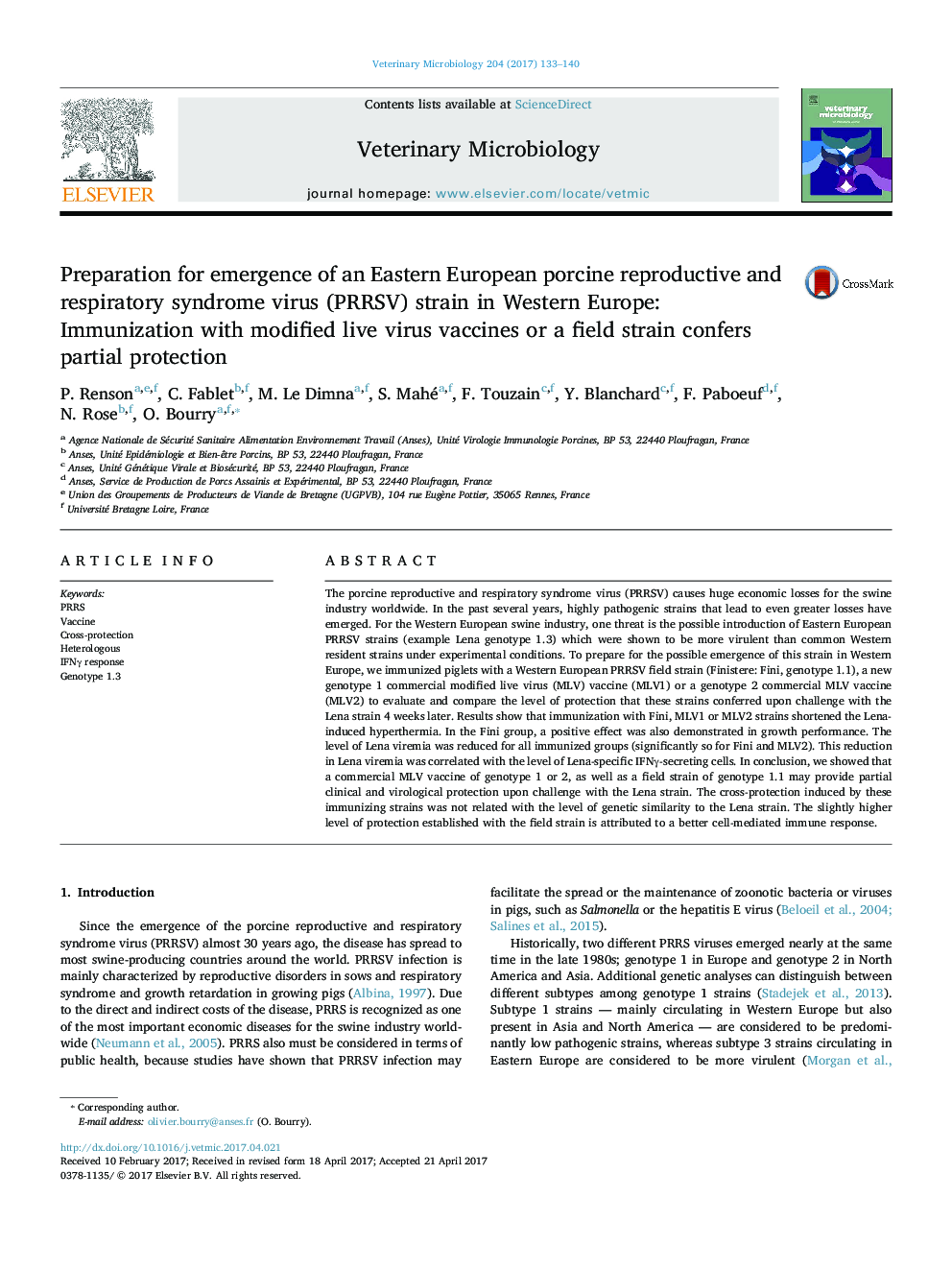| Article ID | Journal | Published Year | Pages | File Type |
|---|---|---|---|---|
| 5545261 | Veterinary Microbiology | 2017 | 8 Pages |
Abstract
The porcine reproductive and respiratory syndrome virus (PRRSV) causes huge economic losses for the swine industry worldwide. In the past several years, highly pathogenic strains that lead to even greater losses have emerged. For the Western European swine industry, one threat is the possible introduction of Eastern European PRRSV strains (example Lena genotype 1.3) which were shown to be more virulent than common Western resident strains under experimental conditions. To prepare for the possible emergence of this strain in Western Europe, we immunized piglets with a Western European PRRSV field strain (Finistere: Fini, genotype 1.1), a new genotype 1 commercial modified live virus (MLV) vaccine (MLV1) or a genotype 2 commercial MLV vaccine (MLV2) to evaluate and compare the level of protection that these strains conferred upon challenge with the Lena strain 4 weeks later. Results show that immunization with Fini, MLV1 or MLV2 strains shortened the Lena-induced hyperthermia. In the Fini group, a positive effect was also demonstrated in growth performance. The level of Lena viremia was reduced for all immunized groups (significantly so for Fini and MLV2). This reduction in Lena viremia was correlated with the level of Lena-specific IFNγ-secreting cells. In conclusion, we showed that a commercial MLV vaccine of genotype 1 or 2, as well as a field strain of genotype 1.1 may provide partial clinical and virological protection upon challenge with the Lena strain. The cross-protection induced by these immunizing strains was not related with the level of genetic similarity to the Lena strain. The slightly higher level of protection established with the field strain is attributed to a better cell-mediated immune response.
Related Topics
Life Sciences
Agricultural and Biological Sciences
Animal Science and Zoology
Authors
P. Renson, C. Fablet, M. Le Dimna, S. Mahé, F. Touzain, Y. Blanchard, F. Paboeuf, N. Rose, O. Bourry,
